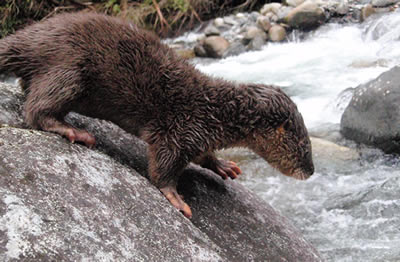
From May 22nd to May 25th, FoEME and its partner Global Nature Fund’s efforts to rehabilitate the Lower Jordan River will be spotlighted at the Green Week Conference in Brussels. This year the conference, aptly entitled “Every Drop Counts,” focuses on water; the FoEME and GNF booth will highlight the Lutra lutra, also known as the “Common Otter,” once numerous in the Jordan River. They will bring the plight of the Otter and its Jordan River habitat to the event and share their knowledge about their dire situation back home in the Jordan Valley.
Here’s a quick overview of what you will learn when you visit our booth, but to get the kiss and show your support for the otter and their water habitat, attend Green Week in person!
- The otter is now listed as near threatened globally (IUCN Red list) but within Israel it is considered critically endangered.
- Until the middle of the 20th century European otters (Lutra lutra) were abundant on all coastal rivers extending from the Lebanese border to the Tel Aviv area, as well as along the Jordan River basin from its source to the Dead Sea. However, during the 1960s the otter population underwent a dramatic decline due to illegal hunting, water pollution, and the drainage of aboveground water sources including the drainage of the Hula swamps in 1957. (IUCN Redlist).
- Genetic studies suggest that there may be genetic separation between the Israeli population and the rest of the European populations such that reintroductions from other countries may not be possible. Thus the protection of this remaining population is critical.
- Only a handful of otters are believed to persist in the Jordan River itself, however this river acts as the single remaining aquatic connection between the only real populations left, in the Hula Valley and Harod Valley (Dolex et al).
- Rehabilitation of the Jordan River will therefore not only increase the likelihood of otters to repopulate the river, but it will also ensure the maintenance of gene flow and dispersal between the last remaining viable populations.
This post was contributed by FoEME intern Cecilia Sibony based in FoEME’s Tel Aviv office.